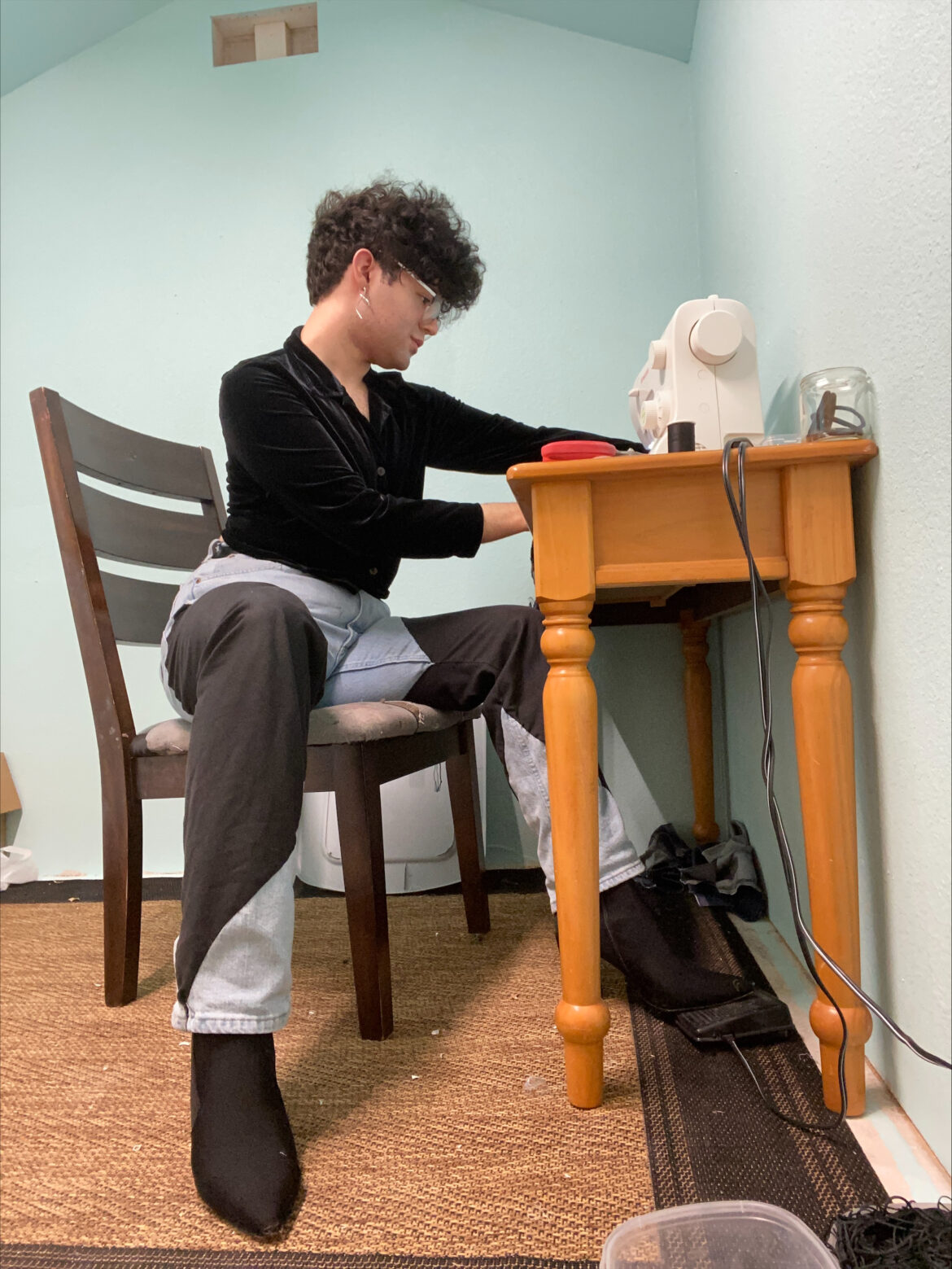Commentary
Resisting fast fashion
|
When COVID-19 locked the world down in March 2020, I needed a creative outlet to help cope with the isolation. Fashion has always been how I express myself, but shopping online wasn’t the same as trying clothes on in a store. So I saved up money, bought a sewing machine, and began making my own clothes.
Joey Wagner works on a new piece at home, wearing clothes made from a thrifted clothing: A size 3X dress turned into a fitted shirt, and thrifted jeans with added black cutouts. I’ve yet to stop, having discovered a new relationship with clothes that has transformed how I see fashion. And I’ve come to realize that in making my own clothes I’m also directly participating in a global conversation about the adverse effects of what some call “fast fashion.”
Fast fashion is a global business model where high fashion runway looks and trendy styles are quickly replicated in factories and then shipped to consumers across the globe. Social media, in particular, fuels constant consumption of cheaply made clothes that someone might wear just one or two times before moving on to the next clothing trend.
